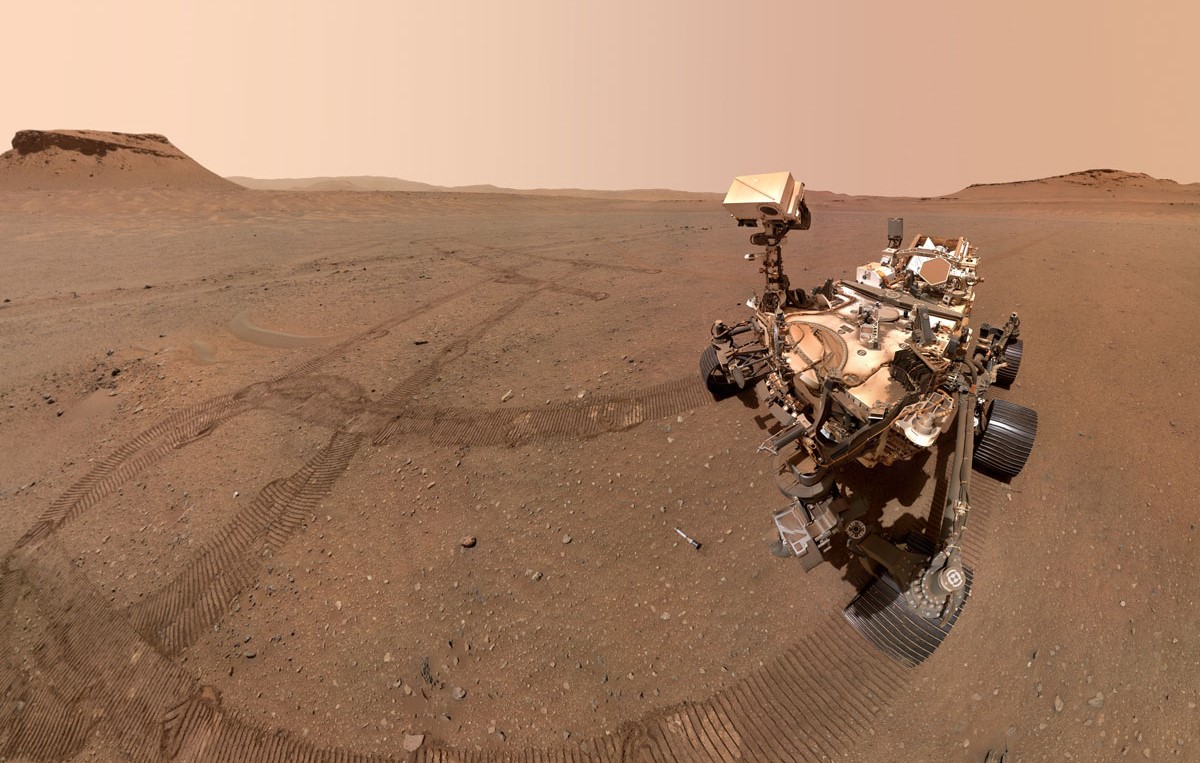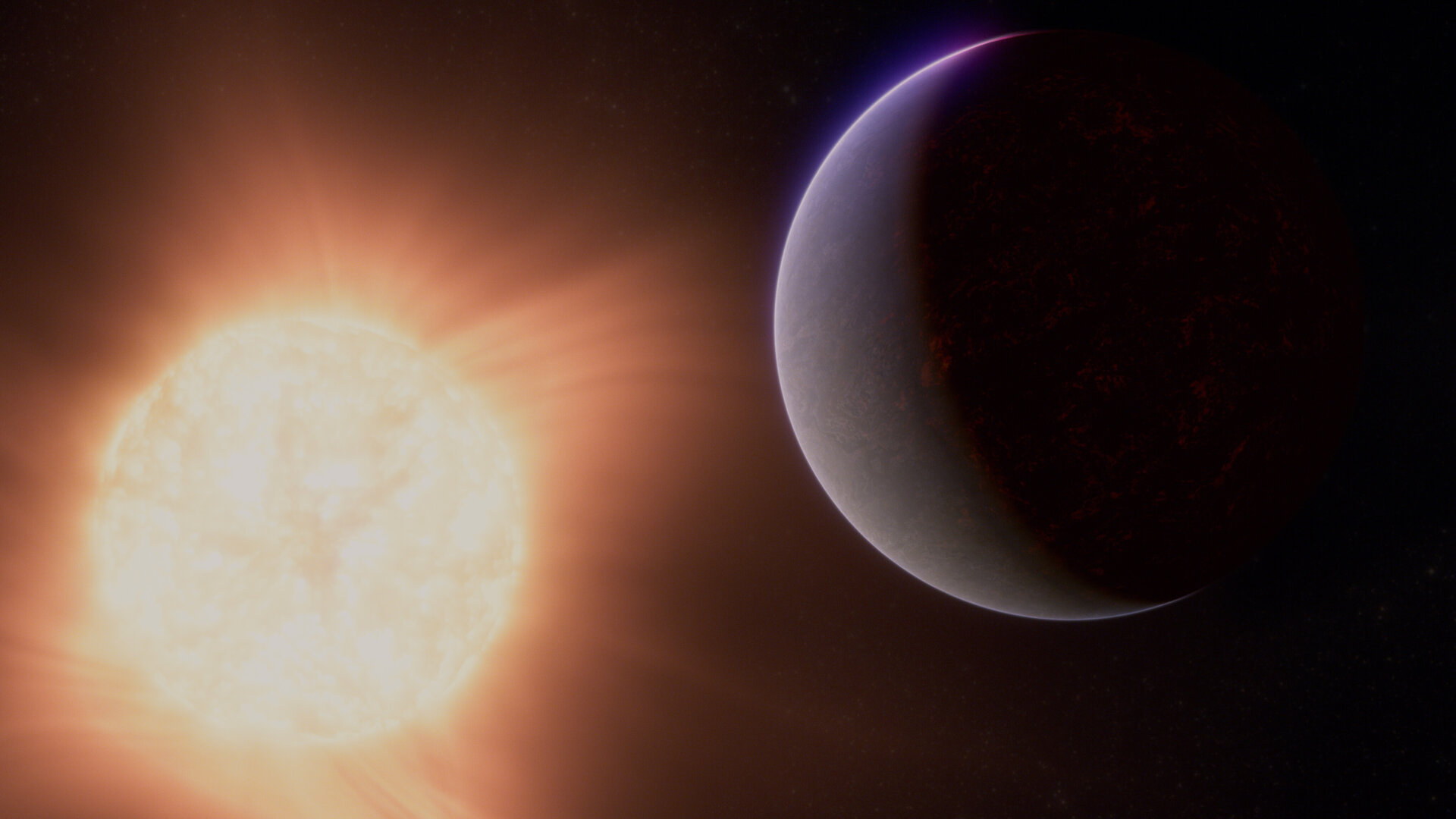After celebrating their 1,000th sol, or Martian day, on Mars, NASA’s Perseverance rover and Ingenuity helicopter are continuing to explore Jezero Crater on the Red Planet. Recently, the robotic pair completed their extensive investigation of the ancient river delta within Jezero, which contains evidence of flowing water that may have once filled Jezero thousands of years ago.
As part of its extensive investigation into the river delta, Perseverance routinely collects samples of the Martian surface, rocks, and other intriguing surface features. To date, the rover has collected a total of 23 surface samples as part of the joint NASA/European Space Agency Mars Sample Return mission. However, scientists get a preliminary look at the samples when Perseverance collects them, and they’ve already been able to decipher pieces of Mars’ geologic history from the samples.
For example, one of the most recent samples Perseverance collected, named “Lefroy Bay,” contained high amounts of fine-grained silica, which is known to help preserve ancient fossils on Earth. Within sample “Otis Peak,” scientists identified large quantities of phosphate — a compound that is often closely associated with life. Both of the samples also contained carbonate, which can preserve local environmental conditions from when the samples were formed.
“We picked Jezero Crater as a landing site because orbital imagery showed a delta — clear evidence that a large lake once filled the crater. A lake is a potentially habitable environment, and delta rocks are a great environment for entombing signs of ancient life as fossils in the geologic record. After thorough exploration, we’ve pieced together the crater’s geologic history, charting its lake and river phase from beginning to end,” said project scientist Ken Farley of Caltech.
Image of Jezero Crater’s river delta, taken by ESA’s Mars Express orbiter. (Credit: ESA/DLR/FU-Berlin)
Though scientists had ideas and theories about what Jezero was like, they ultimately didn’t know until Perseverance landed there in February 2021. Following landing, the rover discovered that the crater floor of Jezero is made of igneous rock, meaning its surface was created from magma under the surface or volcanic activity on the surface. The discovery of igneous rock in Jezero’s surface allowed scientists to confirm that the crater was formed from an asteroid impact nearly four billion years ago.
Subsequent discoveries of sandstone and mudstone by Perseverance allowed scientists to determine when the first rivers began flowing within Jezero a few hundred million years after the asteroid impact. Above these initial sand and mudstones are salt-rich mudstones, which hint at the presence of a shallow lake that was experiencing evaporation. When the lake filled up, fast-flowing waters carried boulders from outside Jezero into the lake, where they were ultimately distributed atop the river delta and throughout the entire crater. Further discoveries by Perseverance and Ingenuity have led planetary scientists to estimate Jezero’s lake to have once been as wide as 35 kilometers and as deep as 30 meters.
“We were able to see a broad outline of these chapters in Jezero’s history in orbital images, but it required getting up close with Perseverance to really understand the timeline in detail,” said mission manager Libby Ives, a postdoctoral fellow at NASA’s Jet Propulsion Laboratory in California.
As mentioned, the samples collected by Perseverance are planned to be returned to Earth via the Mars Sample Return mission, meaning that — in addition to Jezero’s history as a lake — scientists had to factor which locations would provide the best samples when determining Mars 2020’s landing location. Returning the samples to Earth will allow scientists to investigate the Martian surface and surface features in extreme detail, as Perseverance only has a handful of instruments that can analyze the samples.
However, how exactly do scientists determine where to collect samples?
First, the team must identify a specific area or surface feature that may provide scientists with valuable information on Mars’ environment, past, and more. Once a target has been identified, Perseverance will use an abrasion tool on the end of its robotic arm to wear away a small portion of the target. With some of the target’s interior exposed, Perseverance studies the target’s chemistry and characteristics using a suite of instruments, including the Planetary Instrument for X-ray Lithochemistry (PIXL).
At one of Perseverance’s most recent sample targets, named “Bills Bay,” PIXL identified carbonates within the abraded surface of the rock. In addition to preserving local environmental conditions, carbonates can form in watery environments that play host to conditions that may be favorable for preserving organic molecules, which are formed via geological and biological processes. What’s more, Bills Bay also contained silica, which, as mentioned, is great at preserving organic molecules. The presence of carbonates and silica — among other elements and compounds — within Bills Bay is what led scientists to pull a sample from it.
“On Earth, this fine-grained silica is what you often find in a location that was once sandy. It’s the kind of environment where, on Earth, the remains of ancient life could be preserved and found later,” said PIXL deputy principal investigator Morgan Cable of JPL.

PIXL’s analysis of Ouzel Falls. Note the presence of phosphate and carbonate in the abraded rock. (Credit: NASA/JPL-Caltech/MSSS)
Another sample target PIXL investigated, named “Ouzel Falls,” was found to contain iron that is closely associated with phosphate. Phosphate is an important component of DNA, the cell membranes of all known types of terrestrial life, and molecules that carry energy. Perseverance carries instruments capable of detecting microscopic, fossil-like structures and chemical changes that may have been left by ancient microbes. However, these instruments have yet to detect any structures or chemical changes within the samples and surface features Perseverance has investigated.
The aforementioned samples, Lefroy Bay and Otis Peak, were taken next to abrasion patches on Bills Bay and Ouzel Falls, respectively.
“We have ideal conditions for finding signs of ancient life where we find carbonates and phosphates, which point to a watery, habitable environment, as well as silica, which is great at preservation,” Cable noted.
With the science campaign at Jezero’s river delta now complete, Perseverance and Ingenuity will now move on to their fourth science campaign, which will see the robotic pair investigate Jezero’s margin — the area of the crater near the canyon entrance where a river may have once flooded the floor of the crater. Deposits rich with carbonate have already been spotted along the crater margin.
(Lead image: Perseverance takes a selfie after depositing one of its surface sample tubes onto the Martian surface. Credit: NASA/JPL-Caltech/MSSS)




